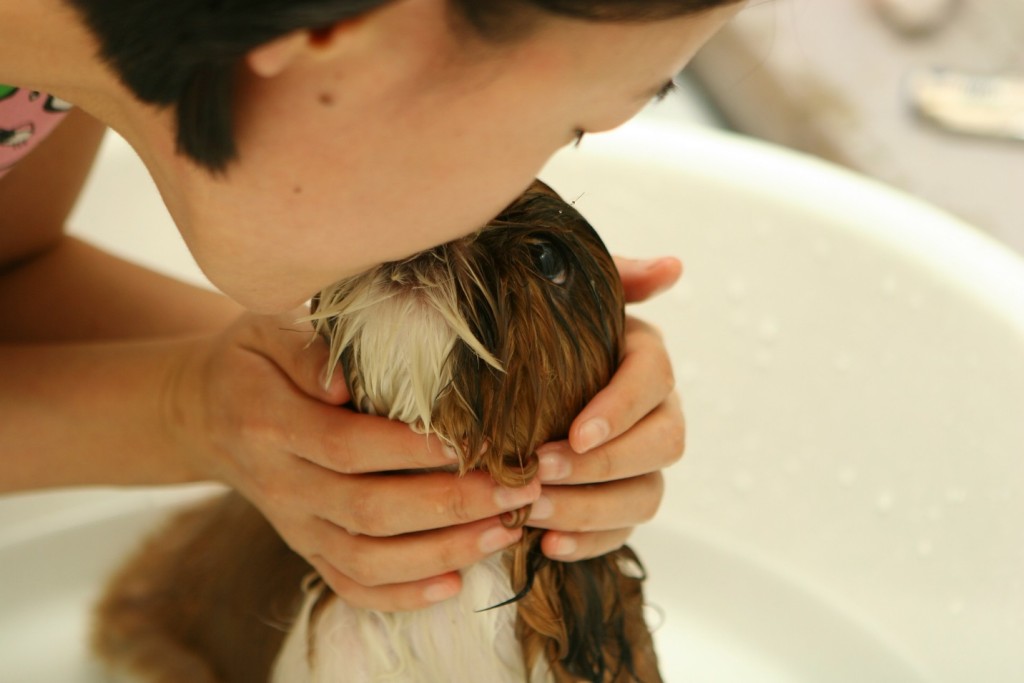
There are a lot of misconceptions concerning pet allergies, particularly in terms of what happens to be the trigger for an allergic reaction. For most allergy sufferers, the trigger for their symptoms is pet dander. A variety of household pets can produce dander that causes a variety of allergy symptoms, but the real allergy culprit may be something else entirely.
To understand the issues surrounding pet dander and how to ameliorate these issues, we’ll take a closer look at what pet dander is, why it affects some people the way that it does, and whether this is the root cause of your pet related allergies.
Pet Dander: Definition and Misconceptions
What is pet dander? One common misconception is that pet dander is only produced by cats and dogs, when, in fact, it is also produced by birds, rabbits, hamsters, and other furry and feathery animals. Dander refers to dry skin that flakes off of animals, in turn becoming airborne and settling throughout a home.
Due to the small, lightweight nature of dander, it’s extremely easy for it to become airborne where it is, in turn, breathed in by people. The edges of these pieces of dry skin are ragged in nature, which makes it very easy for them to become stuck to carpets and upholstery, where they end up staying until disturbed once again and forced up into the air.

While various animals do produce dander that can trigger allergic reactions, it tends to be cats and dogs that this problem is associated with simply because these are the most common pets that people keep in their home.
Dander, however, isn’t the only allergy trigger produced by pets. Apart from dander, pets also create certain enzymes that will lead to allergic reactions. These enzymes are found in pet urine, feces, and saliva, all of which have particles that can become airborne once they’re dry. Interestingly, even though more people own dogs than cats, cats contribute to about double the amount of allergic reactions in people with pet sensitivities.
Another common misconception is that some cats or dogs are hypoallergenic and, therefore, don’t cause allergies for pet owners. This is — regrettably — untrue, as all cats and dogs produce dander to some degree and contain the sort of enzymes that can cause allergies.
Also related to the misconception of hypoallergenic animals is that short-haired varieties of cats and dogs are better for allergy sufferers. While very small bits of pet hair can lead to allergy symptoms, typically dander and various enzymes are what result in allergies. Some people may find that a particular breed of animal causes more problems for them — but opting for a short-hair variety of a cat or dog isn’t going to guarantee an allergy-free environment.
How to Get Rid of Pet Dander:
In order to find out if you’re allergic to pet dander, your doctor can conduct an allergy test, either by drawing blood or testing the skin. If it becomes clear that you are indeed allergic to your pet, then there are a few options open to you.
Some people find that an over-the-counter allergy medicine or a prescription work well at managing animal dander allergy symptoms. You could, of course, opt to get rid of the animal causing the allergy, but, for most pet owners, this isn’t something they could bring themselves to do. In any case, even once your home is no longer the home of an animal, their dander will still stick around for weeks or months.
One solution that many people turn to is that of using an air purifier to help reduce the amount of allergens in the air. While any high-performance air purifier would be a great addition for your home if you deal with pet allergies, there are air purifiers that are made specifically with pets in mind. These purifiers will operate with a multi-stage filtration system that will catch larger particles first and then filter out the really tiny particles — such as pet dander — in the machine’s HEPA filter.

Modifying your pets’ presence in your home can also go a long way in helping reduce the amount of pet-related allergens in your home’s air. If possible, it’s helpful to keep pets outdoors as much as possible — and definitely away from bedrooms. You may also find that certain grooming products help reduce the amount of dander your pet produces, and it may be a good idea to ask your doctor about allergy shots — a course of action that may lead to a more long-term solution.
